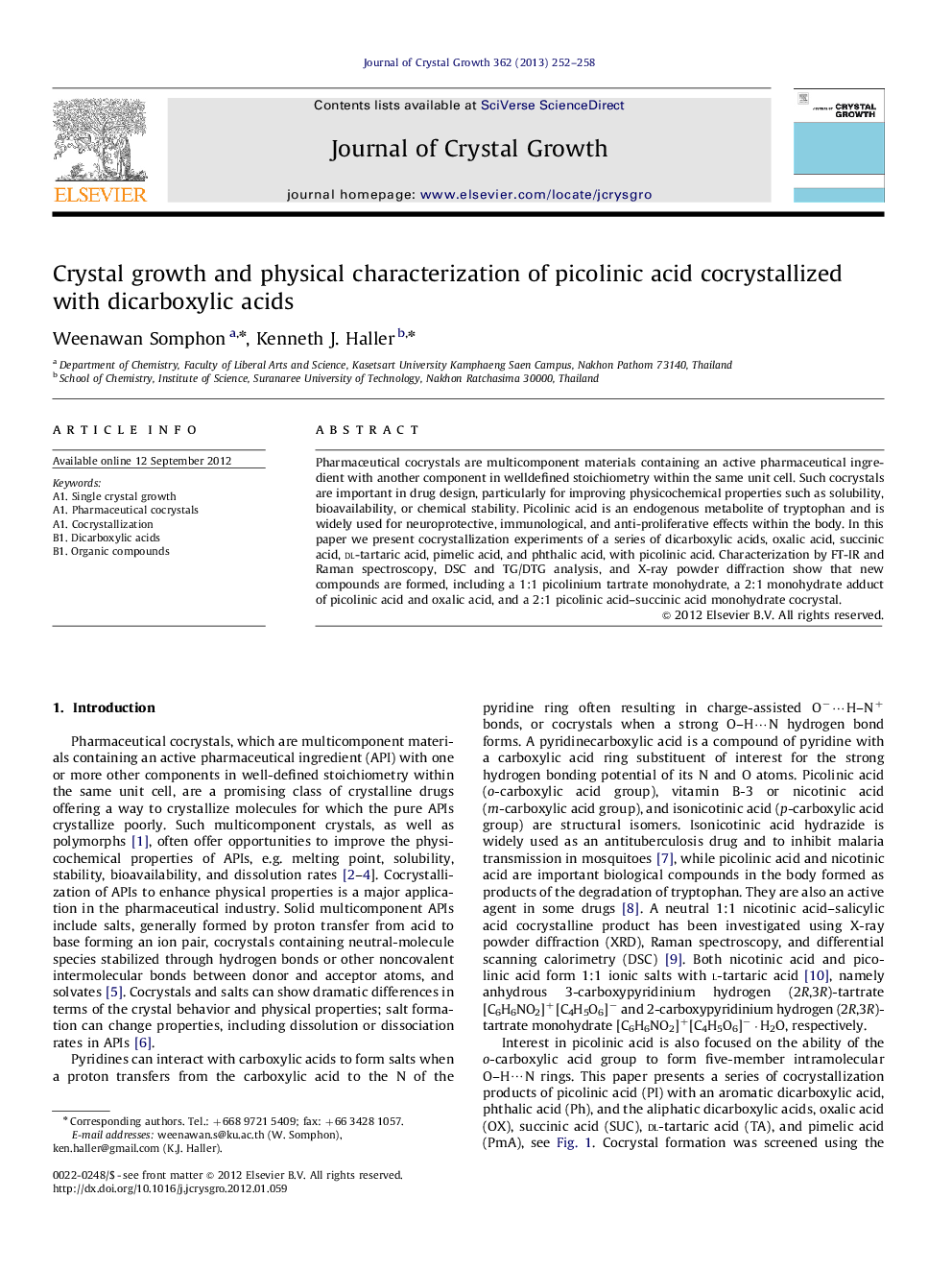| Article ID | Journal | Published Year | Pages | File Type |
|---|---|---|---|---|
| 1791320 | Journal of Crystal Growth | 2013 | 7 Pages |
Pharmaceutical cocrystals are multicomponent materials containing an active pharmaceutical ingredient with another component in well‐defined stoichiometry within the same unit cell. Such cocrystals are important in drug design, particularly for improving physicochemical properties such as solubility, bioavailability, or chemical stability. Picolinic acid is an endogenous metabolite of tryptophan and is widely used for neuroprotective, immunological, and anti-proliferative effects within the body. In this paper we present cocrystallization experiments of a series of dicarboxylic acids, oxalic acid, succinic acid, dl-tartaric acid, pimelic acid, and phthalic acid, with picolinic acid. Characterization by FT-IR and Raman spectroscopy, DSC and TG/DTG analysis, and X-ray powder diffraction show that new compounds are formed, including a 1:1 picolinium tartrate monohydrate, a 2:1 monohydrate adduct of picolinic acid and oxalic acid, and a 2:1 picolinic acid–succinic acid monohydrate cocrystal.
► Cocrystal screening of picolinic acid with dicarboxylic acid are reported. ► Compares solvent-drop grinding and slow evaporation. ► XRD demonstrated new phases were formed. ► Vibration spectra show the existence cocrystals or salts, through strong H-bonds. ► TG/DTG and DSC show thermal stability and melting transitions of products.
